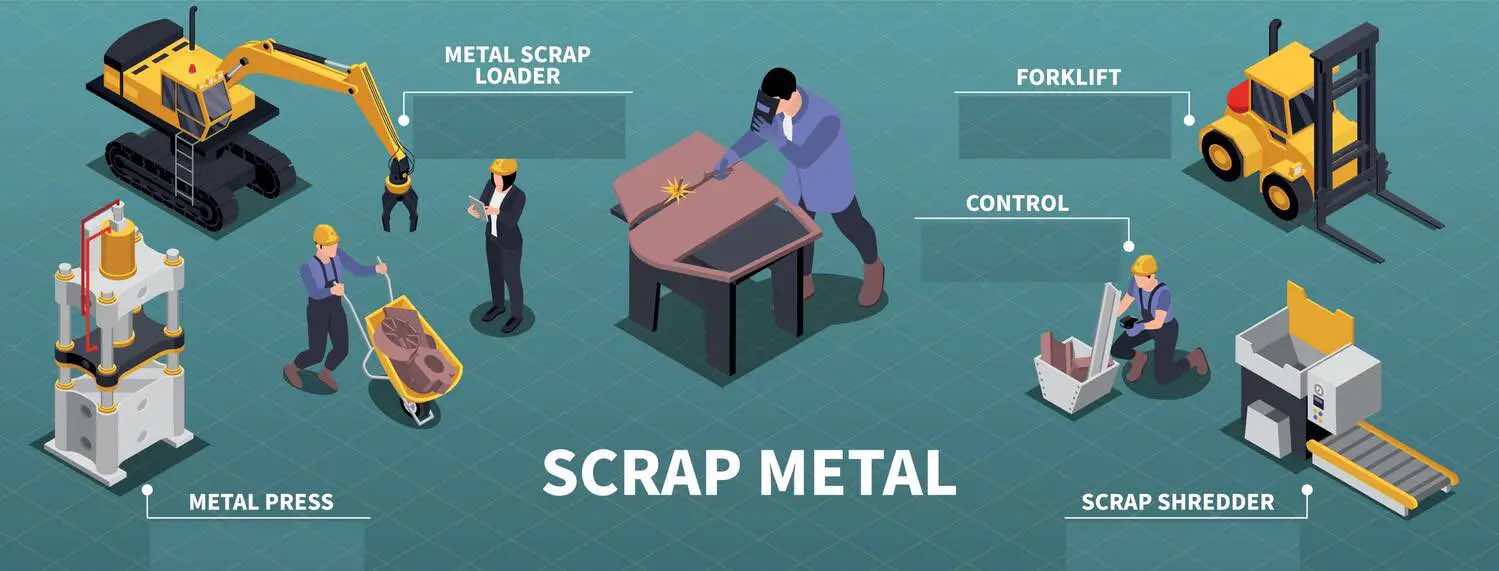Iron and steel scrap is a vital raw materials for the production of new steel and iron products. In the United States, the specification and quality of iron and steel scrap are regulated by various industry organizations and government agencies to ensure that it meets the required standards.

The Institute of Scrap Recycling Industries (ISRI) is the primary organization responsible for setting the specifications for iron and steel scrap in the US. The ISRI specifications provide a uniform and consistent system of grading and classifying iron and steel scrap. The grades are based on the type, size, cleanliness, and consistency of the scrap. The grades are used to determine the value of the scrap and to ensure that it meets the requirements of steel producers.
There are several Specifications of iron and steel scrap, including:
- Busheling: This is scrap that is generated from the production of new steel products. It consists of cuttings, stampings, and turnings from new steel products. Busheling is generally considered to be the highest quality of iron and steel scrap.
- Bundle and Torch: This is scrap that is generated from the cutting and welding of steel products. It consists of pieces of steel that are too small to be sold as individual items. Bundle and torch scrap is typically less valuable than busheling.
- Shredded Scrap: This is scrap that has been processed through a shredder to reduce its size. Shredded scrap is typically less valuable than busheling and bundle and torch scrap.
- Cast Iron: This is scrap that is generated from the production of cast iron products. Cast iron scrap is typically less valuable than steel scrap.
The ISRI specifications also specify the cleanliness requirements for iron and steel scrap. The cleanliness of the scrap is determined by the presence of non-metallic materials, such as grease, oil, and dirt, which can reduce the quality of the scrap and its value.
In addition to the ISRI specifications, the Environmental Protection Agency (EPA) also regulates the handling and transport of iron and steel scrap to ensure that it is done in an environmentally responsible manner. The EPA requires that all iron and steel scrap be properly stored and transported to minimize the risk of environmental contamination.
In conclusion, the specification and quality of iron and steel scrap in the US are regulated by the ISRI and the EPA to ensure that it meets the required standards and is handled in an environmentally responsible manner. Steel producers rely on these standards to determine the quality and value of the scrap they purchase, while scrap processors use them to ensure that their scrap meets the requirements of steel producers.
Examples of Steel Scrap
Steel scrap is a valuable resource that can be recycled and used to produce new steel products, reducing the demand for virgin raw materials and reducing the environmental impact of steel production. Some examples of steel scrap include:
- Old or obsolete steel products: This includes products such as old cars, appliances, machinery, and equipment that are no longer in use.
- Production scrap: This includes cutting, trimming, and grinding waste generated during the production of new steel products.
- Scrap from construction and demolition sites: This includes steel beams, pipes, and structural steel from buildings, bridges, and other structures.
- Scrap from metal fabrication: This includes scrap generated from welding, punching, shearing, and other metal fabrication processes.
- Scrap from end-of-life vehicles: This includes scrap from cars, trucks, and other vehicles that have reached the end of their useful life.
- Scrap from metal processing: This includes scrap generated from rolling mills, forging operations, and other metal processing facilities.
- Scrap from steel packaging: This includes scrap from steel drums, barrels, and other steel packaging materials.
These are just a few examples of steel scrap. The type and quality of steel scrap can vary greatly depending on the source and processing methods used.
 info@scrapmetalpricer.com
info@scrapmetalpricer.com Brownsburg, Indiana
Brownsburg, Indiana

